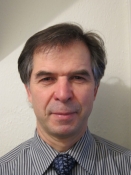Teaching Questioning Skills
There is not much I remember about what I learned in teacher’s college but one thing sticks out. We were told that one of the toughest skills a teacher can master is to effectively use questioning in the classroom, It really is a combination of skill and art. But if developing the skill to question is difficult for us, teaching that skill to students is even more challenging. So I am going to share a strategy that I use once a year in a history classroom. It’s something I picked up at a history conference. Unfortunately, I do not recall the name of the individual who shared it with me, so if you have any idea who developed this strategy with me in the first place, please share it with me so I can properly acknowledge their work. This really is one of the few effective questioning strategies that I have come across. I have since modified this strategy to incorporate historical thinking elements into it.
Here’s how it works:
1. First, find a topic/subject/concept you believe the students haven't heard of before. A few examples could include: “Klondike Fever”, or ”Spanish Influenza”. Who knows, from an American perspective maybe you could use “Manifest Destiny”. I would like to use “Enigma” this year but I’ve got a few students who likely know more about World War II than I do. The one I was exposed to at a conference was “Spanish Influenza”, so that’s the model I’ll share today.
2. Ask students to brainstorm, as a class, as many ideas as they could as to what it could mean. Place all answers, even the absurd ones, on the board. I have received some of the following: a disease, an influence from Spanish, a Spanish dance, a Spanish circus act, a Spanish food, a Spanish clown, a Spanish song. Don't comment on the idea, just write it down. After you get a good 20 or so, move on to step 3.
3. Take a poll where students get up to 5 votes per student. Have them vote on the 5 terms they think the word is most likely to represent. Create a top 5 or top 10 list of things based on the votes. This exercise is only to get their minds thinking and to being open to ideas. Go to step 4.
4. Now ask students to brainstorm, as a class, as many questions they can think of that would fully explain the term to them. These have included: What is it? When did it occur? How many people did it affect? How long did it last? Where did it start? Why did it start? Did it end? Why did it end? Do we still have it today? Again, just list the questions, don't comment on them. The brainstorming technique really opens students minds to a variety of questions that go beyond Who, What, When, Where, Why, How. Once you get enough questions listed on the board (20-30). Move to step 5.
5. Use the polling technique again. This time ask students to vote on the 5 questions they think would likely explain the concept fully to them. Take the top 7-10 answers from the poll.
6. Here is my modification. At this point, you can ask student to link the questions to the historical thinking concepts we've studied. Have all areas been covered? Do they always need to be covered?
7. Hand them an article that you found that deals with the topic. And now have students answer the questions they generated through their poll. The article should be detailed enough that many of the answers students ask will likely be covered in the article. But it shouldn’t be so extensive that it intimidates them. Also, be prepared to deal with the possibility that not all their questions will be answered. If this is the case, go to Step 8.
8. When they are finished, ask them if there were any questions they should have asked, based on the article they just read, that would have better explained the concept to them.
I like this exercise because it does get the students to ask questions outside the basic who, what, when, where, why, and how formula. As well, It helps to develop a set of questioning skills that go to the heart of the Inquiry model that is now central to the Ontario Curriculum.


